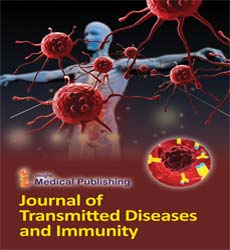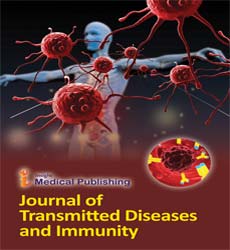ISSN : 2573-0320
Journal of Transmitted Diseases and Immunity
Short Note on Tuberculosis
Alexander E. Berezin*
Department of Internal Medicine, Zaporozhye State Medical University, Ukraine.
- *Corresponding Author:
- Alexander E. Berezin
Department of Internal Medicine, Zaporozhye State Medical University, Ukraine.
E-mail: berezinalexander@yahoo.com
Received Date: March 09, 2021; Accepted Date: March 17, 2021; Published Date: March 29, 2021
Citation: Berezin AE (2021) Short Note on Tuberculosis. J Transm Dis Immun. Vol.5 No.2:31
Tuberculosis [TB] could also be a contagious infection that sometimes attacks your lungs. It can also spread to other parts of your body, like your brain, kidneys and spine and this disease is caused by Mycobacterium tuberculosis.
The bacteria that cause tuberculosis are spread from one person to a special through tiny droplets released into the air via coughs and sneezes.
Signs and symptoms of active TB include:
Coughing that lasts three or more weeks
Coughing up blood
Chest pain or pain with breathing or coughing
Unintentional weight loss
Fatigue
Fever
Night sweats
Chills
Loss of appetite
There are many kinds of tuberculosis, but the foremost two types are termed either active or latent tuberculosis infection. Active TB is when the disease is actively producing symptoms and should be transmitted to other people; latent disease is when the person is infected with Mycobacterium tuberculosis bacteria, but the bacteria aren't producing symptoms [usually because of the body's system suppressing the bacterial growth and spread] and have no TB bacteria within the sputum. People with latent TB usually cannot transfer tubercle bacillus bacteria to others unless the system fails; the failure causes reactivation [bacterial growth is no more suppressed] that leads to active TB therefore the person becomes contagious.
M. tuberculosis could also be a rod-shaped, slow-growing bacterium. M. tuberculosis' cell membrane has high acid content, which makes it hydrophobic, immune to oral fluids.
The cell wall of Mycobacteria absorbs a specific dye utilized within the preparation of slides for examination under the microscope and maintains this red color despite attempts at decolorization.
Tuberculosis could also be a preventable and treatable disease and remains one of the most contributors of morbidity and mortality in developing countries where we are still struggling to provide adequate access to stress.
In the initial stages patients may experience fever, loss of appetite, weight loss, weakness, and sometimes a dry cough. In the later stages when the lungs are infected, blood may appear within the sputum. Bleeding may occur if an artery or tubercle [small tissue mass produced by the infection] ruptures within the lungs.
Common symptoms of an active TB infection include coughing and expulsion blood or sputum, pain, fatigue and night sweats. TB can damage the lungs during an infection, causing inflammation that creates it difficult to breathe. A patient with an active TB infection may additionally have an abnormal chest X-ray.

Open Access Journals
- Aquaculture & Veterinary Science
- Chemistry & Chemical Sciences
- Clinical Sciences
- Engineering
- General Science
- Genetics & Molecular Biology
- Health Care & Nursing
- Immunology & Microbiology
- Materials Science
- Mathematics & Physics
- Medical Sciences
- Neurology & Psychiatry
- Oncology & Cancer Science
- Pharmaceutical Sciences
